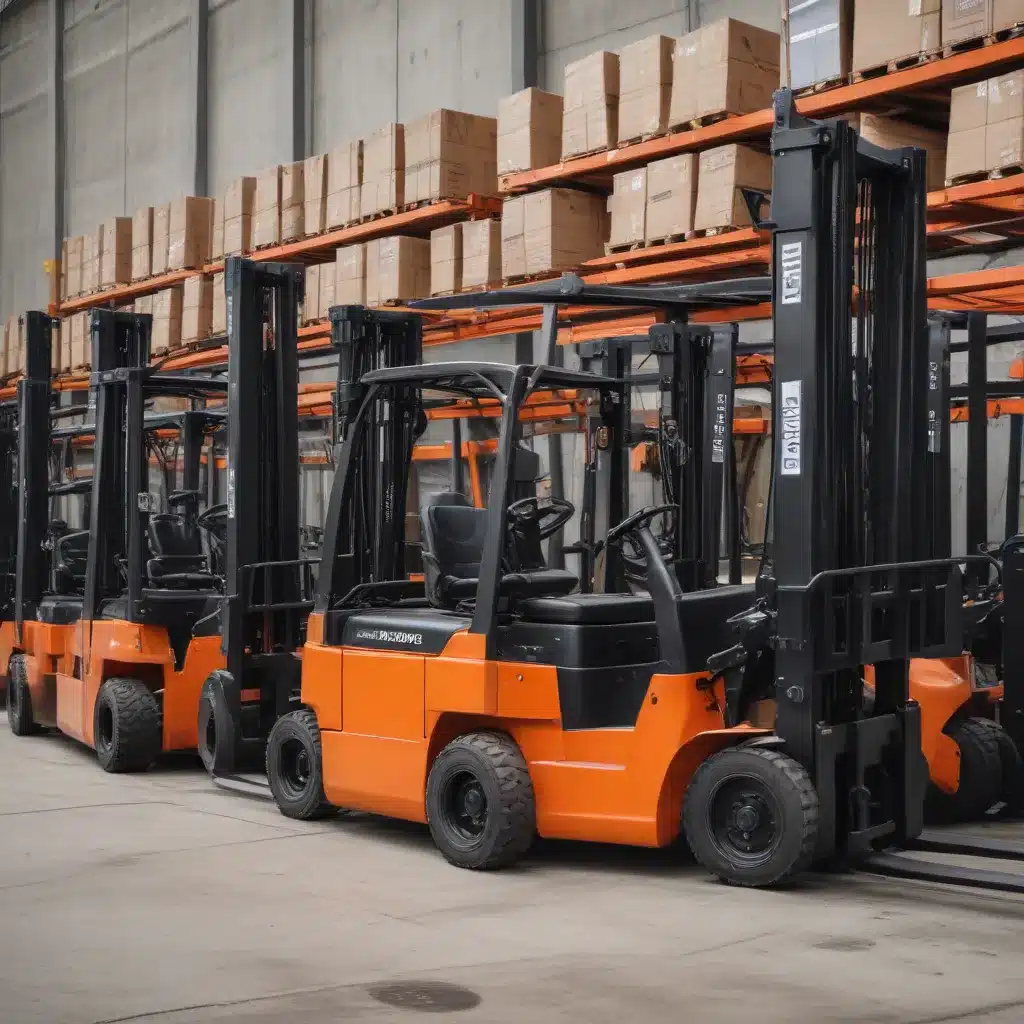
The Shift to Electric: Navigating the Transition
As a seasoned industry expert in forklifts, warehousing, and logistics, I’ve witnessed the growing momentum towards forklift fleet electrification. This shift holds immense promise for businesses seeking to reduce their environmental impact, enhance operational efficiency, and stay ahead of industry trends. However, one key consideration that often arises is the potential risk of battery degradation. In this comprehensive article, we’ll delve into the strategies and best practices to mitigate these risks, empowering you to make informed decisions as you transition your fleet to clean, electric power.
Understanding Battery Degradation
At the heart of forklift electrification lies the battery, the essential component that powers these versatile machines. Unlike their internal combustion engine (ICE) counterparts, electric forklifts rely on lithium-ion or other advanced battery technologies to deliver the necessary power and performance. While these battery systems offer numerous advantages, including zero tailpipe emissions and reduced maintenance requirements, they are not immune to the challenges of degradation.
Battery degradation is a natural phenomenon that occurs over time, where the battery’s capacity and performance gradually diminish. This can be influenced by various factors, such as:
- Charging Patterns: Improper charging habits, such as overcharging or allowing the battery to fully deplete before recharging, can accelerate degradation.
- Operating Temperatures: Exposure to extreme heat or cold can put additional stress on the battery, leading to premature aging.
- Usage Patterns: Frequent, high-intensity use or extended periods of inactivity can also contribute to battery degradation.
Understanding these factors is crucial in developing effective strategies to mitigate the risks of battery degradation and ensure the long-term reliability and performance of your forklift fleet.
Optimizing Charging Practices
One of the primary drivers of battery degradation is the charging process. Proper charging protocols are essential to maximizing the lifespan of your forklift batteries. Here are some best practices to consider:
Opportunity Charging
Lithium-ion batteries in modern electric forklifts are well-suited for opportunity charging, where the battery is topped up during short breaks or downtime. This approach helps maintain a consistent state of charge, reducing the frequency of deep discharges that can strain the battery. By implementing an effective opportunity charging strategy, you can minimize the risks of battery degradation and ensure your forklifts are ready for continuous operation.
Managed Charging Schedules
Establishing a structured charging schedule can also play a crucial role in preserving battery health. Avoid leaving batteries on the charger for extended periods after they’ve reached full capacity, as this can lead to overcharging and accelerated degradation. Instead, develop a charging regimen that aligns with your operation’s usage patterns, allowing the battery to charge efficiently without unnecessary strain.
Temperature Monitoring
Ambient temperatures can have a significant impact on battery performance and longevity. Ensure that your forklift charging stations are located in areas with controlled temperatures, within the optimal range specified by the battery manufacturer. This can help mitigate the detrimental effects of extreme heat or cold on the battery’s chemical composition and overall lifespan.
Preventive Maintenance and Monitoring
Proactive maintenance and monitoring are essential components of a comprehensive battery management strategy. By regularly inspecting and maintaining your forklift batteries, you can identify potential issues early and take corrective actions to prevent premature degradation.
Battery Health Monitoring
Implement a battery health monitoring system that provides real-time data on the battery’s state of charge, temperature, and other key indicators. This information can help you identify any emerging problems and make informed decisions about when to schedule maintenance or replace the battery, optimizing its lifespan.
Preventive Maintenance Routines
Establish a regular preventive maintenance schedule for your forklift batteries. This can include tasks such as cleaning battery terminals, verifying electrolyte levels (if applicable), and inspecting for any signs of physical damage or wear. By addressing issues promptly, you can extend the overall lifespan of your batteries and minimize the risk of unexpected failures.
Training and Operator Awareness
Educate your forklift operators on the importance of proper battery care and handling. Ensure they understand the recommended charging protocols, the consequences of improper usage, and the key indicators of potential battery degradation. Empowering your team with this knowledge can go a long way in preserving the integrity of your forklift batteries.
Battery Replacement and Recycling
Despite your best efforts to maintain and optimize battery performance, the time will come when replacement is necessary. When faced with the need to replace forklift batteries, it’s crucial to consider both environmental and financial factors.
Sustainable Battery Replacement
Look for battery manufacturers and suppliers that offer sustainable replacement options, such as lithium-ion batteries with extended warranties or design features that enhance longevity. These solutions can help mitigate the financial impact of frequent battery replacements and reduce your environmental footprint.
Battery Recycling and Reuse
At the end of a battery’s useful life in your forklift fleet, responsible recycling or repurposing is essential. Many battery manufacturers and specialized recycling facilities can recover valuable materials from spent batteries, contributing to a more circular economy and reducing the need for resource-intensive mining. Additionally, opportunities for battery reuse, such as in stationary energy storage systems, can further extend the lifecycle of these critical components.
Embracing the Electric Future
As you navigate the transition to forklift fleet electrification, the key to success lies in proactively addressing the risks of battery degradation. By optimizing charging practices, implementing preventive maintenance routines, and embracing sustainable replacement and recycling strategies, you can unlock the full potential of electric power while minimizing the operational and financial impacts of battery-related challenges.
The journey towards a greener, more efficient material handling future is underway, and by adopting these best practices, you can position your business at the forefront of this transformative shift. For further insights and assistance in your forklift fleet electrification endeavors, I encourage you to explore the resources available at Forklift Reviews. Our team of industry experts is dedicated to providing the guidance and support you need to make informed decisions and ensure the long-term success of your electric forklift operations.

